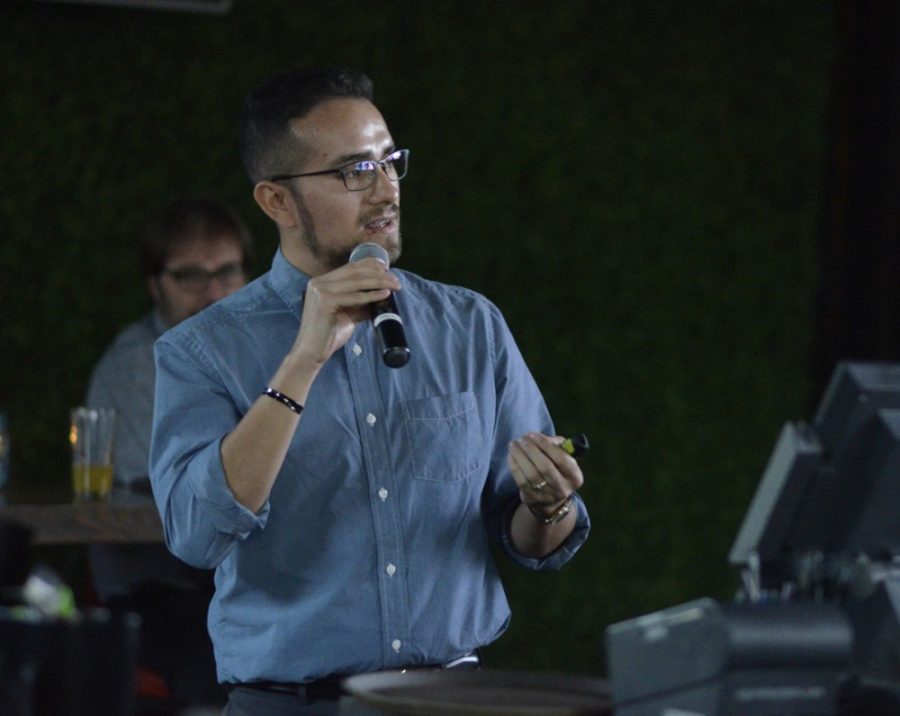The UA’s Confluencenter for Creative Inquiry hosted their Show & Tell: Grad Jam on Wednesday from 6-7:30 p.m. at Playground Bar and Lounge.
“Show & Tell is a monthly event on a Wednesday,” said Jamie Manser, the communications and events coordinator for the Confluencenter for Creative Inquiry. “We have it downtown at Playground. Tonight, we had our graduate fellows who presented the research that they were able to do due to the funding that we granted.”
Eric Magrane, a graduate student in the School of Geography and Development, who presented “Woven Words at the Arizona-Sonora Desert Museum,” shared his own poetry and the poetry that you can find at the Arizona-Sonora Desert Museum.
Marco Macias, a graduate student in the history department, shared “Francisco ‘Pancho’ Villa in Collective Memory and Popular Culture,” showing his love for the revolutionary Pancho Villa and everything related to him, from comic books to statues.
“He was here in Tucson,” Macias said. “The hotel where he stayed in Tucson is still here; it is about two blocks away. In December 1912, he [escaped] jail and [stayed] here in Tucson. It is from here that he [got] funding to form a revolution in Chihuahua. So for me, Tucson is really important in that sense.”
The last presenter was Edward Polanco, who presented “Empowering and Revitalizing an Indigenous Language with Technology.” Polanco is also a graduate student in the history department. He shared an Android app that he created called “Nahuatl Naman” to help people who are interested in learning the Nahuatl language and the culture.
Polanco discussed why the Nahuatl language is so important by relating it to Spanish. For example, the Spanish word “mitote,” which means gossiping or making a lot of noise, comes from the Nahuatl word “mitotli,” which means dance or festival.
“There are a ton of words that come from the Nahuatl language that really influence the way that Spanish is spoken in Mexico and other parts of the world,” Polanco said. “There [are] approximately 1.7 million speakers of Nahuatl in Mexico, according to the Mexican government.”
Polanco pointed out how people who want to learn the language are able to do so through his app because it can be accessed in both English and Spanish. He also mentioned that Yale University is going to pick up the app and use it in their classrooms in a pilot run.
“It is not just teaching you how to say words,” Polanco said. “It is also telling you the importance and significance of the word, and how long people have been speaking the language and things like that.”
_______________
Follow Alisha Perera on Twitter.















